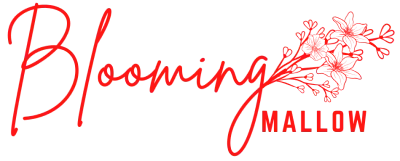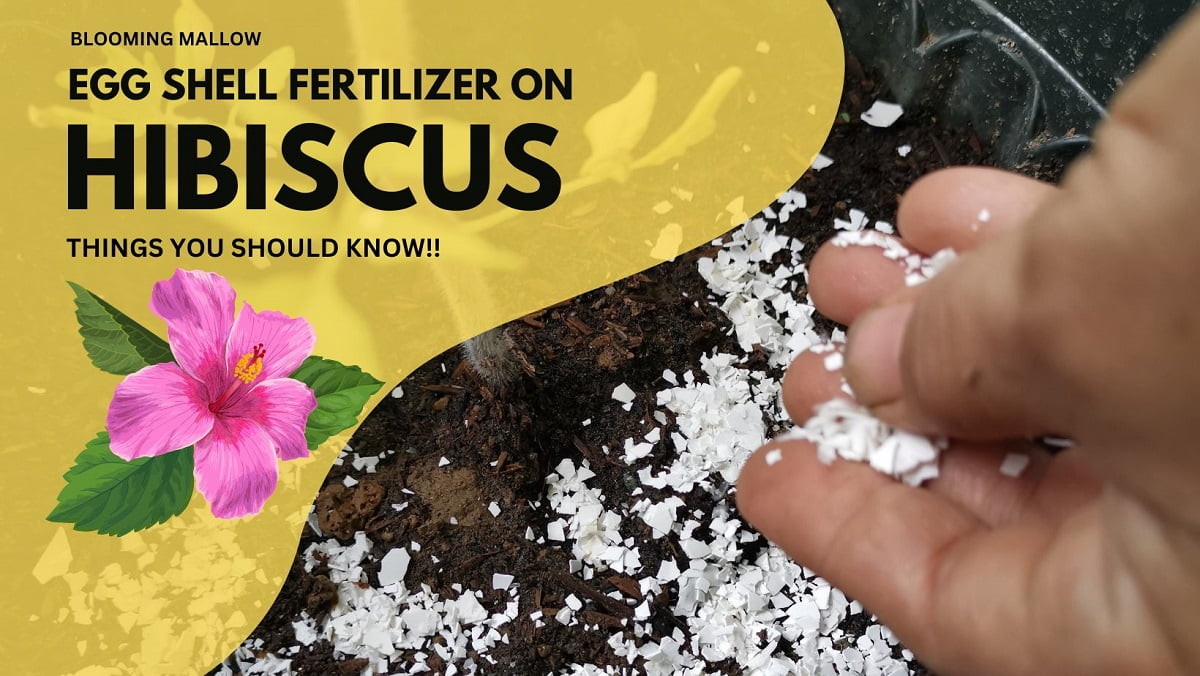
Eggshells have been known to be an effective organic fertilizer that provides a steady source of calcium to the plants. A regular eggshell, weighing around 6 grams, is made up of about 37.5% calcium, while the rest of it includes minerals such as carbonate, magnesium and phosphorus.
That’s a lot of minerals indeed, especially calcium, which makes their use in the garden all the more worthwhile. But how much of it does your hibiscus really need? In this post we will discuss in detail.
Nutrients In Eggshell
- The outer layer of egg, the so-called eggshell, comprises of 95% minerals (especially calcium carbonate – CaCO3), 2.4% protein, 1.6% D2O, 0.3% phosphorus and 0.3% magnesium.
- It also contains some trace amounts of sodium, potassium, zinc, manganese, iron, copper, strontium, fluoride and selenium.
- Some studies also indicate that the calcium contained in eggshell powder can be absorbed better than pure calcium carbonate, which makes it an effective calcium supplement.
- Eggshells are thus an effective and inexpensive organic compound that can be used both for outdoor gardening and for houseplants that require a high dose of calcium at regular intervals.
How Much Calcium Does Hibiscus Require?
Calcium is responsible for binding together the cell walls of a plant. If there is a deficiency of calcium, emerging tissues, for example young leaves or shoots, show sluggish growth due to improper cell wall construction.
Having said that, calcium is a secondary macronutrient needed by hibiscus, along with magnesium and sulfur. This means that it is important, but not as important as the primary nutrients like nitrogen, phosphorus and potassium (NPK). So, while these secondary nutrients cannot be ignored, they are needed in very small amounts and should therefore be added sparingly only when required.
Incidentally, fertilizing directly with calcium in the form of eggshells is not necessary on Hibiscus. And if you do, it can be harmful to them. The necessary dose of calcium, required by hibiscus, is easily obtained from the soil as well as from the water supplied to it. And if you live in regions where water is particularly calcareous, then you probably shouldn’t even think about adding it externally.
This official website of the United States government provides a good overview of water hardness levels in each state.
To be even more sure, you can perform a hardness test to measure the condition of your potting soil and irrigation water. You can get these pH test strips from any hardware store, garden supply store or pharmacy near you.
Does Hibiscus Benefit From Eggshells?
Eggshells are mainly composed of calcium carbonate. This high lime content in the eggshells neutralizes or eliminates the acidic soil properties of hibiscus plant, making the environment more alkaline. However, this effect is limited to sandy soils. So, for all other soils, eggshells are unable to provide calcium and are thus ineffective.
Since hibiscus plants prefer slightly acidic soils, the addition of eggshells will either have no effect (due to soil composition) or make the soil slightly alkaline – which will have a detrimental effect on the overall growth of the plant.
And not only with hibiscus, but also with plants such as hydrangeas, anemones, begonias, heathers, lilies, lupines and magnolias, the use of eggshells should be avoided if you are growing them along with your hibiscus.
In addition, excessive fertilization with calcium in the form of eggshells can interfere with the hibiscus’ uptake of other nutrients. This, in turn, can create a deficiency of other important macronutrients.
Lastly, if you are thinking about adding crushed egg shells just to keep snails and slugs away, then perhaps you should think about adding ground coffee to your Hibiscus plant instead. This is because snails and slugs can move over incredibly sharp objects owing to their thin layer of mucus – as demonstrated in this YouTube video.
How Can I Tell If My Hibiscus Is Calcium Deficient?
Calcium is considered to be one of the limiting nutrients, essential for root structure and osmotic processes. However, it is possible that the soil might become calcium deficit primarily due to overwatering. This deficiency first appears on younger leaves and may show symptoms such as deformity, yellowish texture and brown spots over them.
To address calcium deficiency, instead of giving eggshells, which will have a negative effect on hibiscus, I would recommend to regulate the frequency of watering. In general, calcium uptake depends on water intake. So, avoid both overwatering as well as underwatering.
A uniformly moist environment will help the roots to absorb the calcium from the soil as well as from the water supplied to them. For more insights on hydration, see this detailed article on how often you should water your hibiscus plant.
Moreover, if you notice any signs of calcium deficiency (which is quite rare), you should avoid overfertilizing, especially with nitrogen fertilizer containing ammonia, as this inhibits the absorption of calcium even more.
Advice- Spring water or treated water have a relatively low calcium concentration, averaging 21.8 mg/L. So, if you need to fertilize your hibiscus with calcium, you can switch to mineral based water for few days. Mineral water usually contains high concentrations of calcium, averaging 208 mg/L calcium.
Should I Use Eggshells On Hibiscus?
Hibiscus prefers growing in somewhat acidic soil. This is why many hobby gardeners use sulfur or its compound such as aluminum sulfate to lower the pH of soil.
Likewise, eggshells can be used to gradually raise the pH in case the acidity of the soil gets extremely low, although the results are not guaranteed. Therefore, even after adding eggshells, your hibiscus may show symptoms of calcium deficiency.
More importantly, Hibiscus is calcium intolerant. This means that although it absorbs this nutrient from the soil or water, any direct addition should be completely avoided. Also, the assimilation of iron is blocked in calcareous soil which leads to iron chlorosis in Hibiscus.
As for general nutrition, eggshells alone cannot fully meet the dietary requirements of hibiscus plant. So, there is no point of using them exclusively.
Personally, I use banana peels as an organic calcium source for Hibiscus. And apart from calcium, these peels include a lot of other micro and macro nutrients, including potassium, phosphorus, and magnesium which are needed for overall growth. For more details, check out this article on banana peels and its effect on Hibiscus.
Bottom Line
No doubt that eggshells are an excellent source of calcium for plants. The acid present in the soil neutralizes the calcium carbonate present in the shell, releasing carbon dioxide and thereby decomposing it. But because this process makes the soil alkaline, its use on Hibiscus is not at all advised. Besides, what’s the point of feeding plants with something that’s already abundant in soil?
With this we bring an end to this article. Please feel free to reach out in case you have any queries related to Hibiscus and its care.
Happy Gardening!😊




